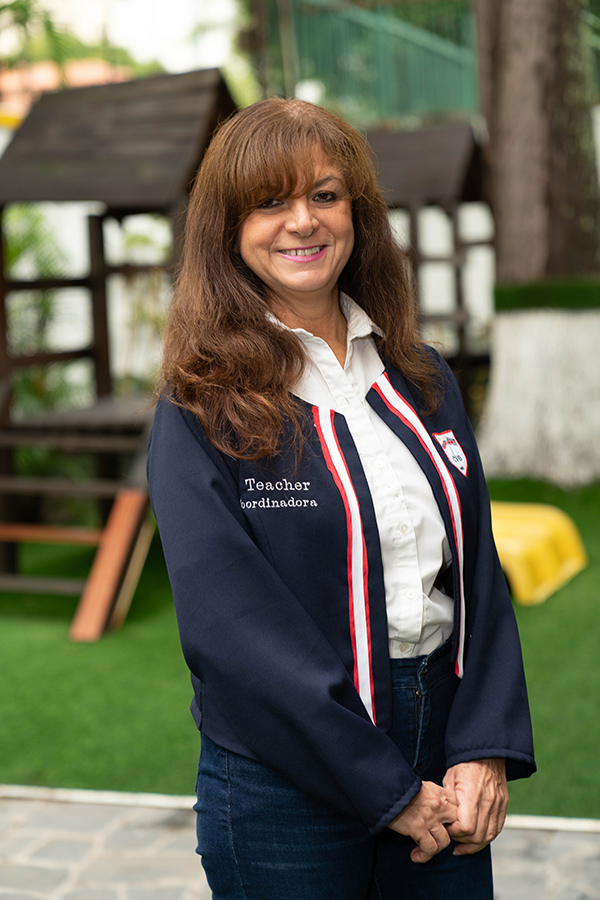
Teacher Liliana Moncaleano
Coordinadora Inglés
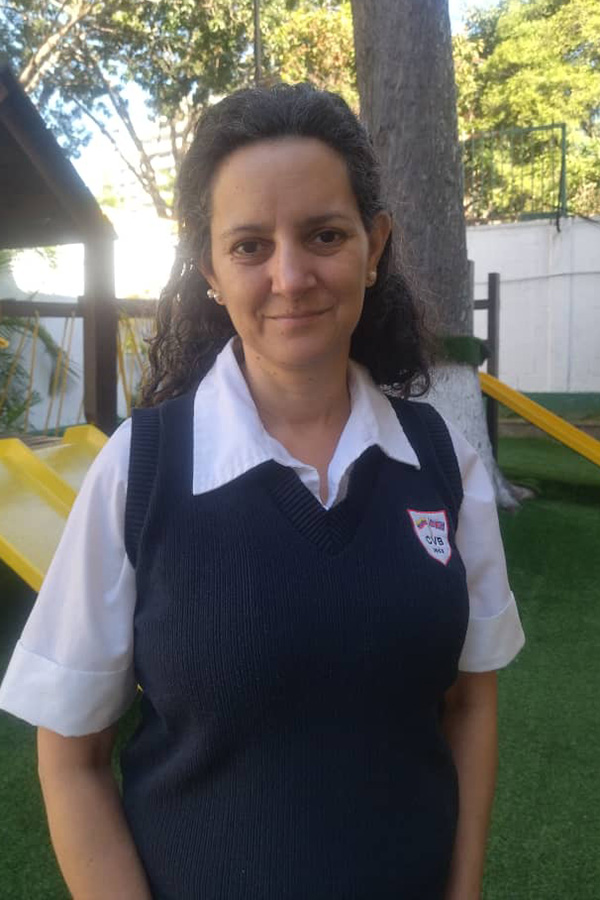
Teacher Dinorah Rawlins
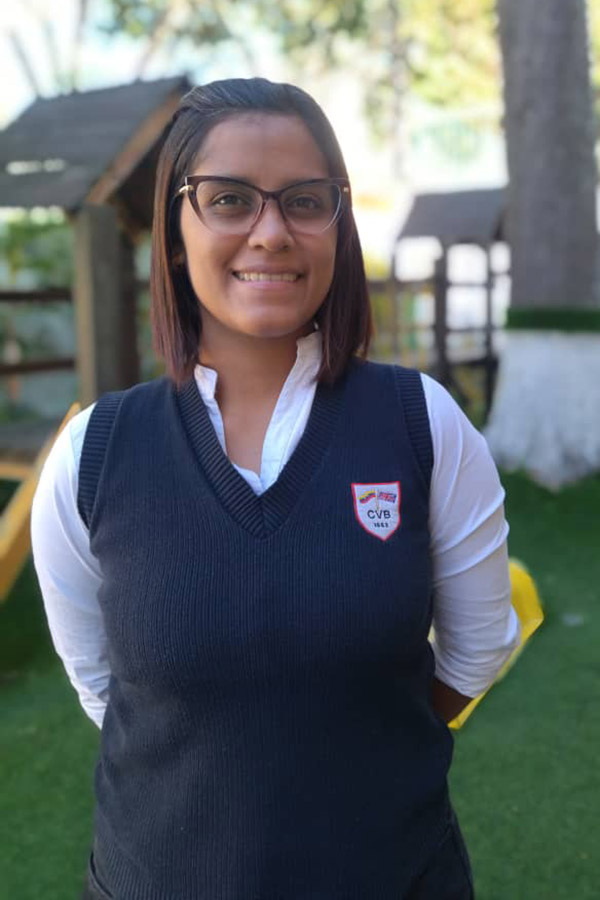
Teacher Hildiany Saavedra
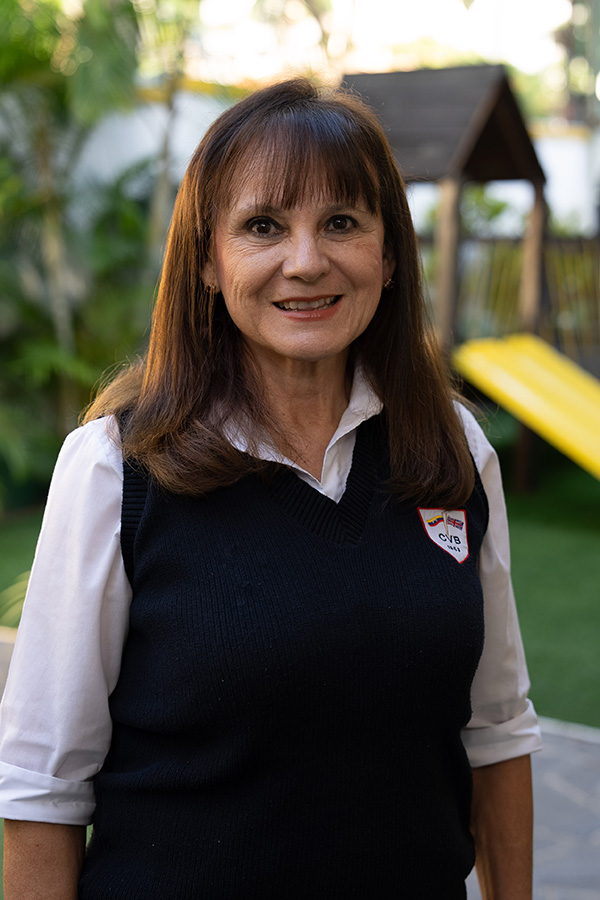
Teacher Sandra Moncaleano
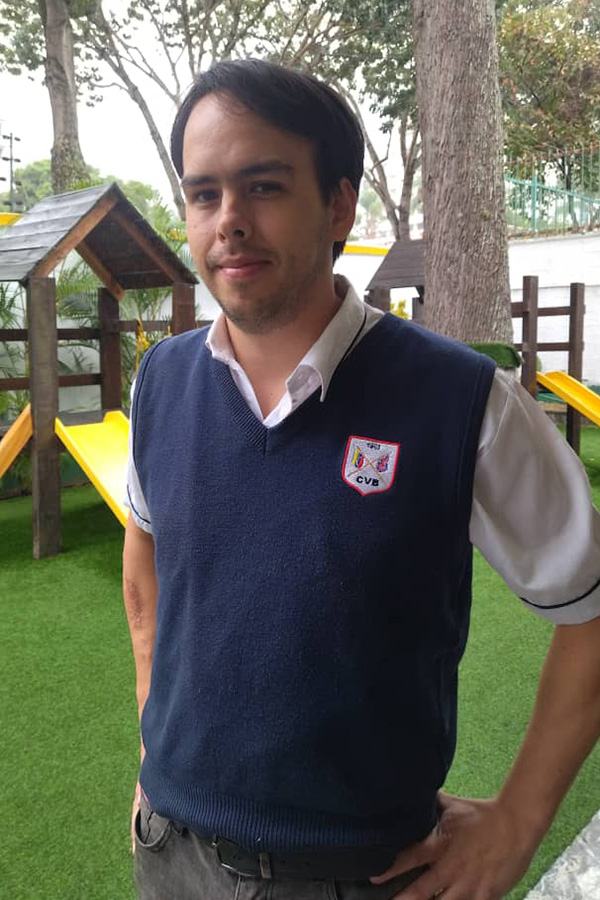
Teacher Jesús Castro
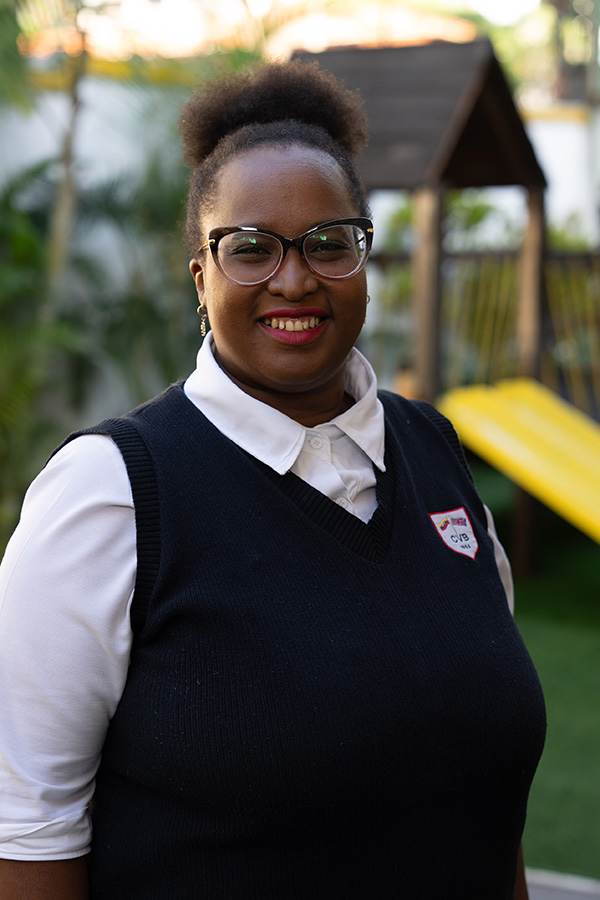

Coordinadora Inglés





In this level, the students will learn: how to greet in English, farewells, the numbers up to twenty, the colours, the shapes, the vowels, animals on the farm, pets, parts of the face, classroom supplies, clothes and weather, alphabet trace, the family (father, mother, sister, brother, grandma, grandpa), nature vocabulary, toys, fruits and vegetables.
In this level, the students will learn greeting and farewell, school objects, identifying colours and colour patterns, the letters of the alphabet, following basic commands, expressing possession, home and family vocabulary, identifying farm animals and the sounds they make, what´s this? It´s a…, what colour is the….? It´s…, numbers up to fifty, classroom supplies, how many(…) are there?, identifying parts of the body, identifying arts of the face, identifying oneself as a boy or girl, distinguishing between left and write, following basic commands, describing ongoing actions, what´s he/she doing?, how many (hands) do you have?, identifying clothes, the weather(it´s rainy, it´s sunny), identifying and classifying food and drinks (I´m hungry, I´m thirsty), identifying fruits and vegetables, the members of the family.
The main objective of 3rd level is to teach children to speak, to listen and to interact in English. There are four areas of development. We aim to cover. Literacy. Numeracy. Personal and Social Development. Knowledge and understanding of the world. Literacy: To learn identify by hearing and sight the sounds and symbols that make up the English Alphabet. To learn to differentiate between vowels and consonants. To learn to pronounce the phonemes. Numeracy: To learn to identify by hearing and sight the sounds and symbols of the numbers up to 100. To learn to recognize and differentiate between geometric shapes and be able to point out characteristics that make them similar and different. Personal and Social Development: To work on developing empathy and general courtesy. To join in and feel as member of a group working together towards a collective goal. To take turns, wait patiently and respect other children´s turn. To communicate emotions and needs in a positive and constructive way that is appropriate to the classroom context. Knowledge and understanding of the world: To recognize different colours To learn the days of the week, the months of the year as well as having a general notion of time(day and night, soon and later). To understand the notion of left and right and executive commands on lateral thinking and space recognition (up and down, near and far, etc). To observe and explore nature through physical experimentations as well as through classroom projects, books and other activities (animals, plants,) To observe and explore the human body through physical experimentations as well as through classroom projects, books and other activities. To experiment with the five senses, to relate and understand what each sense is used for. In addition to these areas we will pay attention to the main aspects of language development. Listening and speaking: Listening. With the help of songs and nursery rhymes the children will be able to listen and understand what others are saying. Speaking. With the use of resources such as onomatopoeia sounds and noises we aim to help our children to speak clearly fluently and confidently.
1. Read sentences in English language. 2. Knows the complete alphabet. 3. Works in the classroom. 4. Identifies Numbers and letters. 5. Identifies and use Common and Proper Noun. 6. Knows the difference between Nouns and Personal Pronouns. 7. Write numbers (Numbers and letters) from One (1) to Five hundred (500). 8. Write short sentences in English language. 9. Speak short sentences in English language. 10. Answer simple questions as How old are you? 11. Identifies Colours and shapes. 12. Use some vocabulary. 13. Understand when someone speaks in English language. 14. Use the Verb To Be. 15. Resolve Additions and Substractions. 16. Count until 20. 17. Use verbs as run, walk, write, read, take. 18. Identifies and name school Supplies, toys, food, family members.
Reading skills are developed how an extent of grammar class. Students are able to enhanced their English in order to answer and ask questions such as who, what, where, why, and when about a story. Children will develop an understanding of structure, and points of view add meaning to a story. Writing skills will also be improved at the same time, as students will be asked to state and support opinions, explain how to complete a task, and tell a story with written word. A student’s use of the English language will be improved upon by having the student practice every day, using prepositions, collective nouns, irregular plural nouns, adjectives, and adverbs. Also, Simple present, present continuous, demonstrative pronouns, auxiliary verbs, Modals. Science is based on three main cornerstones; improving understanding, learning more and acquiring habits and values for living in a community. Math program will help students develop a solid mathematics background, writing numbers, cardinal and ordinal numbers, Rounding numbers, telling time, place value, basic properties of addition and subtraction, and, Problem solving.
OBJECTIVES Third grade is a year of highly visible progress in reading, writing and language arts. By the end of third grade, students should: Learn the importance of prewriting strategy Understand the formula for the writing process Learn how to write for a particular audience Recognize the importance of being able to communicate orally and writing in English. Recognize and produce vocabulary. Learn and implement grammatical structures Pronounce and intonate words and phrases. Orally express ideas, feelings and experiences, while respecting the regulatory aspects of the language. Participate creatively in oral communication situations. Demonstrate curiosity, interest and respect for the ways of life of the English speaking countries. Show interest and curiosity about the ideas expressed in texts written in English. They will learn different strategies to build reading comprehension skills. They are asked to summarize, evaluate, make inferences and write about stories. Lessons develop critical thinking, comprehension, writing skills and vocabulary. They will learn about story elements of fiction, fairy tales, myths, and biographies. Third graders learn how to identify and use the elements to find cause and effect. Lessons develop vocabulary, critical thinking and writing skills. They will know noun forms (singular, plural, regular, irregular), verbs, adjectives, sentence types (declarative, interrogative, exclamatory), sentence structure (subject, predicate), subject verb agreement and proper punctuation. Students are asked to practice writing skills while applying new knowledge. Spelling Introduces compound words, homophones, homonyms and contractions. Third graders will learn the rules of spelling and variant spelling patterns while introducing new vocabulary. Students demonstrate mastery by proofreading words based on new rules. Speaking and Listening They will know how to listen effectively, ask appropriate questions, how to paraphrase to confirm comprehension, and how to respond to comments and questions from the speaker. Students are asked to perform an interview to demonstrate skill mastery. They will learn strategies, elements of a paragraph, research techniques and the writing process. Students are asked to write a fictional short story, a poem, a letter and a research report by using the steps of the writing process. Express likes and dislikes. Recognize verbs expressing actions and suggestions. Comparative and superlative adjectives. Express frequency and time. Identify the numbers up to 50 millions. Resolve addition, subtraction and multiplication problems. Prepositions of Place between, in the middle of, next to, on, on the left/right, opposite. Present simple. Present Continuous. Prepositions of Time on (Monday), at (nine o’clock). Adverbs of Frequency always, never, often, sometimes, usually. Imperatives Turn around. Don’t (run). Some/Any There is some salad. There isn’t any cheese. Quantity Expressions. Should/Shouldn’t. Going to. Possessive Pronouns :Mine, yours, his, hers, ours, theirs. Sequencers: First, then, next, after that, finally. Be able to listen, read and answer questions about the stories read Develop short sentences, making appropriate use of grammatical element. Understand proper sequence of scenes and conversations from the main story. Participate in discussions and dialogues, showing a progressive verbal fluency. Collaborate actively and positively in classroom activities and implementation of the project. Write, read, recognize and produce words and expressions: the subjects and school schedules, professions, body parts, food and animal’s habits, seasons, sports, hobbies, equipment sports.
In this level, the students will learn: tag questions, relative pronouns (who, that, where), comparative and superlative adjectives, simple past of regular and irregular verbs, present perfect (+ already, never, yet), conjunctions ( and, but, or, so), Wh-question words (where, what, who, when), going to for future plans or plans already decided, zero conditional advice with modal Should, suggestion with modal Could, how long…? (for, since), used to, had to, didn´t use to, future with will/won´t, there will be. The students will reinforce the four skills: listening, speaking, reading and writing.
OBJECTIVES Use grade appropriate vocabulary. Apply comprehension strategies to a variety of literary genres. Write and punctuate appropriately in research and composition assignments. Speak and listen with grade appropriate skill. Express their feelings and ideas with great confidence and clarity. Speak fluently and accuracy. Vocabulary – Teaches an application and expansion of grade level appropriate vocabulary incorporating the use of synonyms, antonyms, homonyms, prefixes, suffixes, homophones and idioms. Teaches the student how to apply comprehension strategies to literary and expository texts. Students explore the use of summarizing, plot identification, main idea, theme, cause and effect, inferences, compare and contrast fact vs. opinion, making inferences, and the author’s purpose through the use of interactive exercises. Reading Teach student’s competency in reading skills through the use of text organizers, structure of words, text elements, and interpretation. Students are asked to summarize and paraphrase passages, identify the cause and effect relationship within a story, and set purposes or goals as a reading strategy. Students will learn how to read and respond to various types of literature. Lessons will focus on the elements of a story such as plot, setting, and character development. Students will use traditional tales, fiction, science, biographies to recognize and experience the fact that literature is used as a record of human experience. Students are asked to read aloud and do oral presentations to demonstrate control of expression while speaking publicly, express their opinions respectfully, demonstrate effective listening skills through summarizing speeches or lectures, and give and follow detailed directions. Students develop proficiency in speaking and listening through interactive assignments. Grammar – Teaches the punctuation rules, comma rules, and the use of quotation marks. In the grammar lessons, students are asked to determine the correct tense of verbs, identify linking verbs, identify indirect and direct objects, use predicate adjectives within a sentence, use comparative and superlative adverbs within a sentence, correctly identify homophones and homographs, and correctly write hyphenated words within a sentence. The students will learn verb tense: Past perfect, present perfect, present perfect continuous, future with will and going to, could, may and might for future possibilities, Zero conditional First conditional, active and passive voice, direct and reported speech, Writing – Lessons focus on paragraph writing, reports, and composition writing. Students are asked to write a paragraph using topic and supporting sentences, create an outline to organize information. They will use story elements to write a composition in literal and figurative language and distinguish between first and third person point of view. Finally, they will be taught how to edit and revise their work. Spelling – Teaches spelling and proofreading guidelines through the application of spelling rules and exceptions. Students are asked to consistently apply the given rules. Math: Students develop an understanding of operations using addition and subtraction of whole numbers, multiplication using 3 by 2, and division with 2 digit divisors and 3 digit dividends. They will be able to write numbers up to million. The students will be able to solve math words problems using Addition, Subtraction, Multiplication or Division. General Knowledge: They will learn about hobbies and leisure, living things, the environment, sea creatures, insects, plants (Classification, nutrition, reproduction) Matter ( Properties, changes and states). Some important people around the world.
© Diseñado por MagentaVisuals